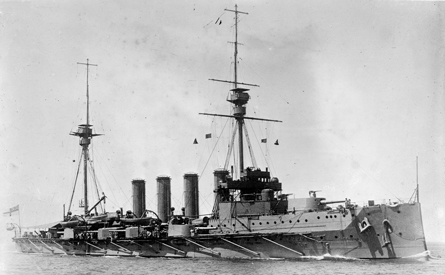- More than 2 years ago
Climate scientists need your help — not by sending up weather balloons or drilling ice cores in Antarctica, but by turning on your computer.

Researchers are using crowdsourcing to digitize reams of historical weather data, filling gaps in existing 20th century records and extending their coverage back in time to the period before the Industrial Revolution.
Anyone with an Internet connection can help scientists read the century-old logbooks where ship hands on British naval vessels scrawled weather observations.
Currently, not much is known about weather over the ocean.
“The virtue of the navy is that they sent ships all over the world,” says Philip Brohan of the Met Office Hadley Centre in Exeter, England.
The ships’ data can be used to test climate models and better inform agriculture, says Rob Allan, a climate scientist at the Met Office and the project manager of the Atmospheric Circulation Reconstructions Over Earth initiative. The initiative’s scientists gathered in Baltimore November 3–5 to discuss their progress, future plans and what to do with all the data they’ve collected to date.
The ACRE initiative’s goal is to collect details like temperature and pressure from regions all over the world back to the early 1800s. The last big project of this kind, the 20th Century Reanalysis Project, went back to 1871. At the Baltimore conference, climate scientist Edward Hanna from the University of Sheffield in England showed how he used those data to infer the weight of the Greenland ice sheet.
There are still gaps even in 20th century weather data, notably around World War I. But scientists are using crowdsourcing to take advantage of the meticulous record-keeping of the British navy at that time.
The Old Weather Project, launched in October, scanned 4,000 logbooks from 280 Royal Navy ships. Like the crowdsourcing project GalaxyZoo, which asks web visitors to classify pictures of galaxies, online users can read a page and type in, from a shipman’s scrawled notes, the temperature and pressure measurements from that day.
In the first three weeks users digitized 100,000 pages and completed log books from three ships — 8 percent of the total data. A smaller Swiss project called Data.Rescue@Home is soliciting citizen scribes to interpret data from German weather balloons during World War II and from a meteorological station in the Soloman Islands that operated during the first half of the 20th century.
If the Old Weather pilot works, Brohan says, soon other large collections of data could be digitized. Convoys from the East India Trading Company kept logbooks on their voyages from England to India and China during the 18th and 19th centuries, Allen says. The British Library in London has about 900 of those logbooks.
Because as many as six East India ships traveled together as a convoy, researchers may be able to spot discrepancies between books that indicate mistakes. Measurements were mainly made from mercury thermometers and barometers and the quality of the data depended on how eagle-eyed the ship hand was.
“Some had training in it or had a personal interest, so they’d be very careful in how they made the measurements,” says Allen. “Some were just told to put something in there at the end of the day.”
Certain regions don’t have much data. South America is one of those blank spots on the map. But a data reconstruction project is being launched in Chile using 4,000 to 6,000 logbooks from the 1860s to 1960s, Brohan says, and similar work is being done in Australia and the southwest Pacific.
Some of the voyages are interesting to social scientists too. The logbooks from the H.M.S. Beagle, which carried Charles Darwin around South America between 1831 and 1837, had careful weather observations, says Brohan. And out of William Parry’s three tries to reach the North Pole, he covered the most sea in 1819 — a surprisingly warm year in the Arctic, says Brohan, with very little floating ice.
The aim of the project is to predict how climate affects weather variability. But accumulating a massive bank of data won’t necessarily help weather stations make guesses about the weather more than 10 days in the future.
“It’s not possible to predict when it will start raining in Baltimore,” says Brohan. But it is possible to predict how the chance of rain in Baltimore changes if there is a massive drought in California or a heat wave in New York City.
Another long-term goal is to mesh the data together in a user-friendly website where people could enter a date and location and find out what the weather was like that day, says Allen.






